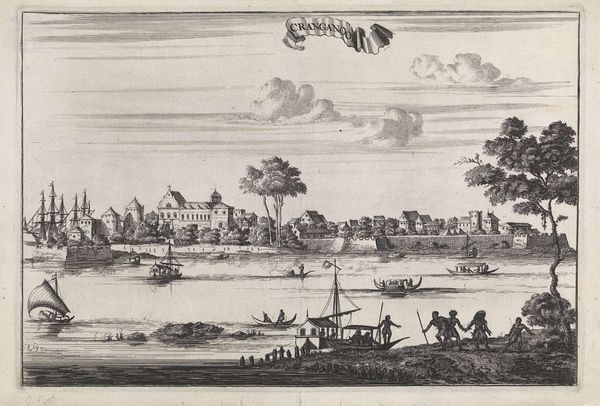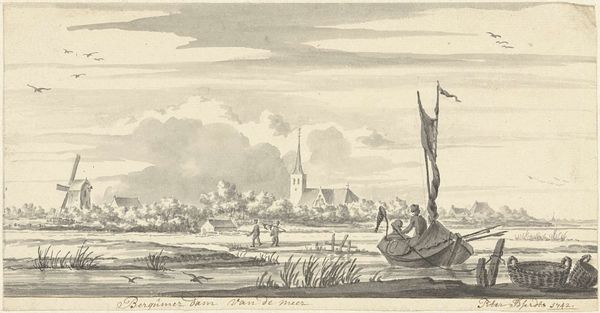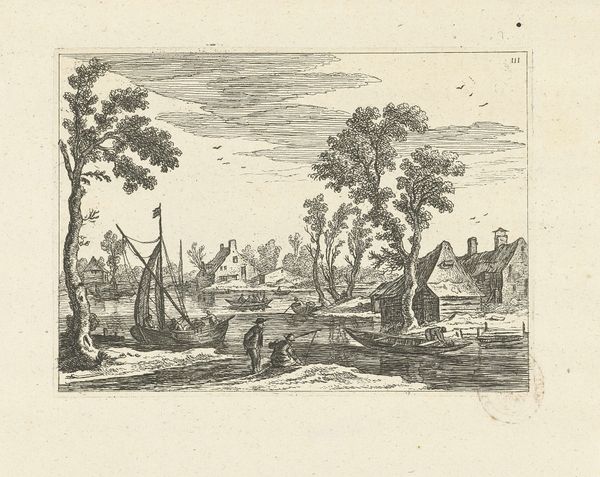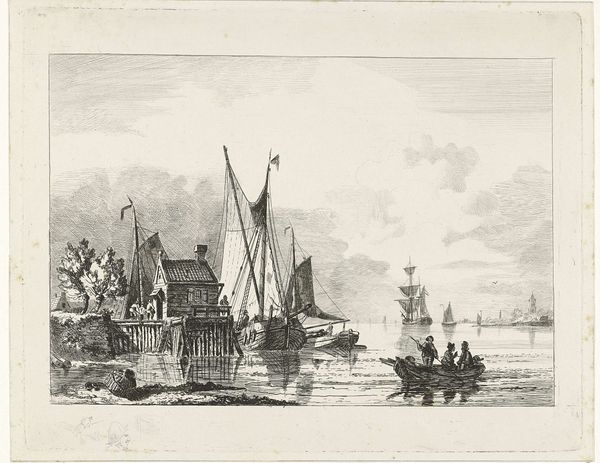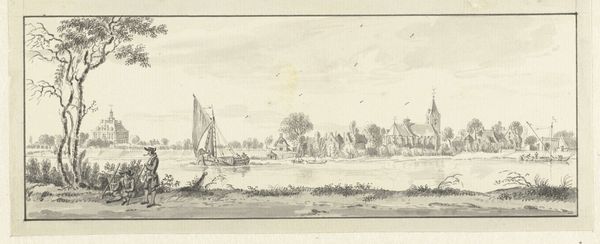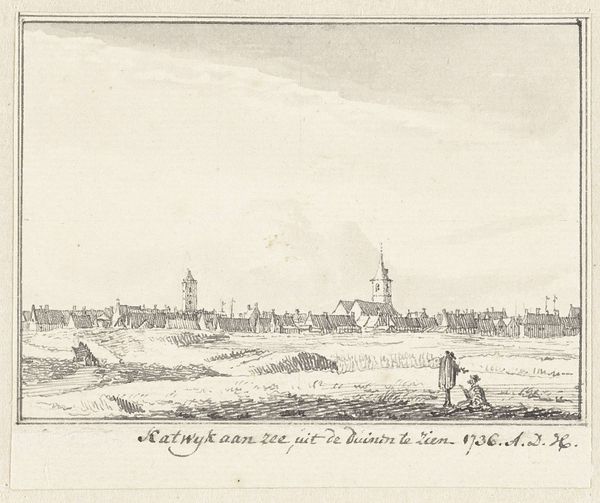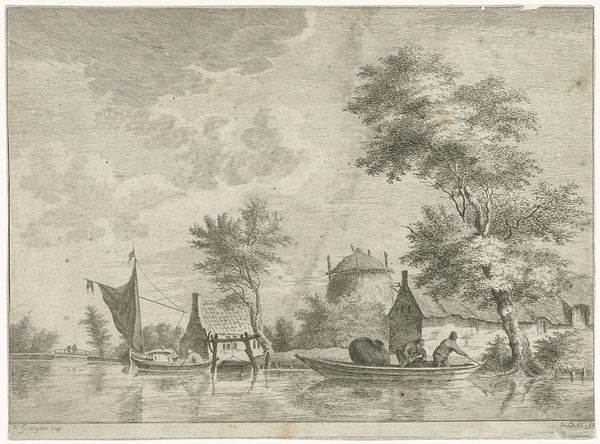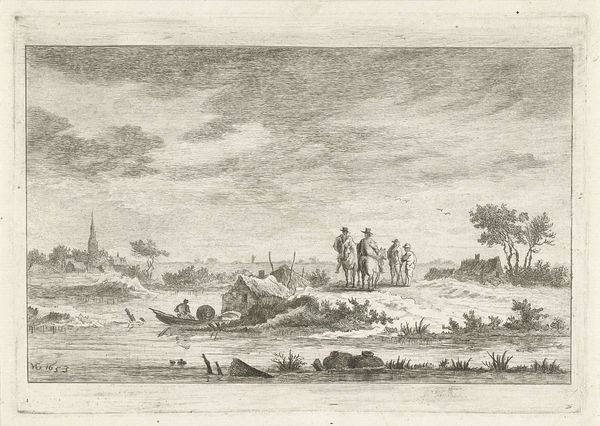
drawing, watercolor, ink, pen
#
drawing
#
dutch-golden-age
#
landscape
#
watercolor
#
ink
#
pen
#
genre-painting
Dimensions: height 191 mm, width 304 mm
Copyright: Rijks Museum: Open Domain
Editor: Here we have Gerrit Grasdorp's "Wintergezicht op het Zwarte Water bij Zwolle," dating from the late 17th century. It’s ink, pen and watercolor on paper. The thing that immediately grabs me is the long line of figures pulling a sled—it makes me wonder, what exactly are they hauling? What's your perspective on this scene? Curator: Well, consider the material conditions that necessitated and enabled such a scene. We have to look beyond a mere representation of winter amusement. Think about the labor involved: the ink that needed grinding, the reeds that needed processing for paper, the cost of pigments. Even the act of freezing transforming a waterway into a transport route reflects a particular engagement with the natural environment dictated by economic imperatives. Editor: That’s interesting, so you see the artwork as more than just an aesthetic representation of a winter scene, but also an indication of the material resources available at that time. But does it move beyond the immediate context in any way? Curator: Precisely. And beyond resources, it shows the availability of leisure for some. How might access to that technology, that labor, be distributed in 17th century Zwolle? Think about the production that supports even that scene. And then there's the potential commodification of this view – drawings like these would circulate, spreading certain notions of Dutch prosperity tied to this laborious, frigid landscape. Do you see anything beyond a genre painting? Editor: I suppose that hadn’t occurred to me! I was so focused on the immediate depiction of figures and landscape that I overlooked the significance of how these people are making use of what they have and how this is further commercialized as drawings of daily life in Zwolle. Curator: That interplay, the dance of labor, material, representation and consumption, is what makes it art, and more importantly makes this object more important to a cultural understanding of 17th century life and economy. It’s certainly expanded my appreciation of it, thank you!
Comments
No comments
Be the first to comment and join the conversation on the ultimate creative platform.
